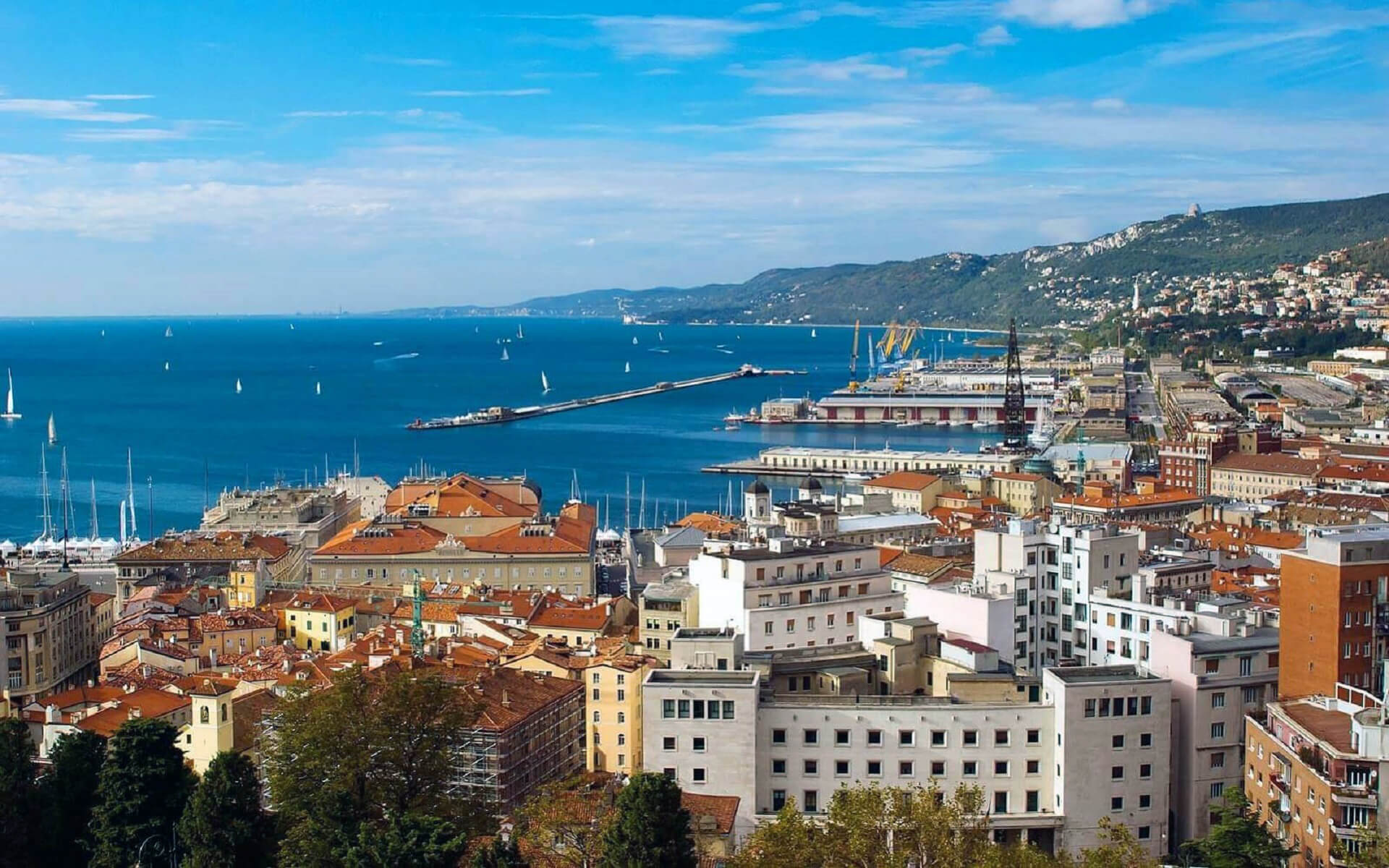Trieste became a significant European city in economics, trade, and business during the Austro-Hungarian Empire, and was the empire’s fourth-largest and most important center after Vienna, Budapest, and Prague. However, Trieste’s economy declined with the city’s transfer to Italy during World War I. However, Fascist Italy encouraged a massive expansion of Trieste in the 1930s, with new industrial operations tied especially to naval and military sectors (such as the well-known “Cantieri Aeronautici Navali Triestini (CANT)”). Allied airstrikes during World War II decimated the city’s industrial district (mainly the shipyards). As a result, Trieste was mostly a peripheral city throughout the Cold War. However, Trieste has witnessed a modest economic resurgence since the 1970s.
Today, Trieste is a vibrant and cosmopolitan city with a cultural community that accounts for around 8% of its population, and it is a significant EU hub for trade, politics, culture, shipbuilding, education, transportation, and business. The city is a part of the Corridor 5 initiative, which aims to improve transportation links between Western and Eastern Europe by passing via Slovenia, Croatia, Hungary, Ukraine, and Bosnia.
The Port of Trieste is a commercial maritime center with active container and oil terminals, as well as steel factories. The oil terminal feeds the Transalpine Pipeline, which serves 40 percent of Germany’s energy needs (100 percent in Bavaria and Baden-Württemberg), 90 percent of Austria, and more than 30 percent of the Czech Republic. One of the busiest RO/RO [roll on roll off] lines in the Mediterranean connects the ports of Trieste and Istanbul. The port is also Italy’s and the Mediterranean’s (as well as one of Europe’s) most important coffee port, providing more than 40% of Italy’s coffee. Trieste’s successful coffee business originated under Austria-Hungary, with the Austro-Hungarian government even granting the city tax-free status to stimulate greater trade. Some relics of Austria-coffee-fueled Hungary’s economic ambition, such as the Hausbrandt Trieste coffee firm, exist. As a consequence, modern-day Trieste has a plethora of cafes and is still renowned as “the coffee capital of Italy.” The Trieste Coffee Cluster was founded by coffee companies as their major umbrella organization, but also as an economic operator in its own right.
The city is home to the worldwide or national headquarters of two Fortune Global 500 companies: Assicurazioni Generali (BIT: G) and Allianz (BIT: ALV). Fincantieri (BIT: FCT), one of the world’s top shipbuilding businesses, and Wärtsilä’s Italian operations are both headquartered in Trieste. AcegasApsAmga (Hera Group), Autamarocchi SpA, Banca Generali SpA (BIT: BGN), Genertel, HERA Trading,Illy, Italia Marittima, Modiano Playing Cards, Nuovo Arsenale Cartubi Srl, Jindal Steel and Power Italia SpA; Pacorini SpA, Siderurgica Triestina (Arvedi Group), TBS Group (BIT: TBS), Telit ( The local Slovene community actively contributes to the economy via a thriving banking organization, the Zadruna Kraka Banka (ZKB).


